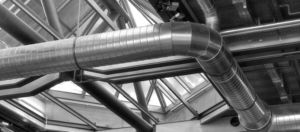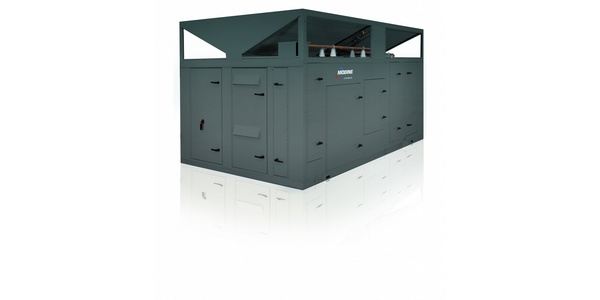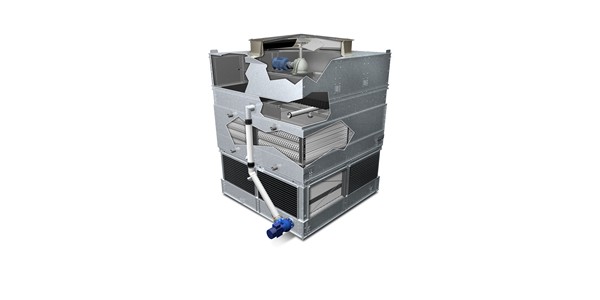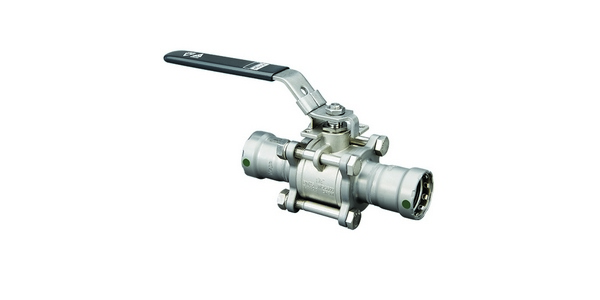By Joseph Tenuta
Over the past 12 months or so, the green movement has been bypassed by the “clean movement.” While energy efficiency is still important, clean is critical. A renewed focus on indoor air quality has HVAC systems pushed to new limits. What happens when air handling units cannot be replaced because of budgets or space restrictions or new regulations? Older, more antiquated systems are being pushed leaving facility managers scrambling to figure out how they can keep the air clean without damaging their equipment.
Now, if the budget allows and there’s ample space to remove and replace an existing air handling unit with new, go for it. That’s the better choice. But if the perfect scenario does not exist, then there are some measures a facility can implement to improve the IAQ in their facility. Fans can be replaced and upgraded with fan arrays. Ultraviolet light systems can provide disinfection within the duct. While both are great, what good are they if the air is still traveling through damaged and corroded heating and cooling coils?
I n a chaotic time, it’s often easiest to be bullish on installing the latest and greatest to help cure a problem. Many times, however, people forget the basics. Replacing coils at the end of their life will provide a cleaner path for air to travel. It’s no surprise that clean coils will help the fans work less, and UV technologies clean the air and not the mold growing in the unit. It may seem relatively simple to replace a heating or cooling coil and, in most applications, it should be. Yet, there are some nuances to replacement coils, and understanding those nuances will make for a far less stressful experience. Below are 10 tips to keep in mind when replacing heating and cooling coils.
n a chaotic time, it’s often easiest to be bullish on installing the latest and greatest to help cure a problem. Many times, however, people forget the basics. Replacing coils at the end of their life will provide a cleaner path for air to travel. It’s no surprise that clean coils will help the fans work less, and UV technologies clean the air and not the mold growing in the unit. It may seem relatively simple to replace a heating or cooling coil and, in most applications, it should be. Yet, there are some nuances to replacement coils, and understanding those nuances will make for a far less stressful experience. Below are 10 tips to keep in mind when replacing heating and cooling coils.
- Take as many photos as possible of the coil and the unit(s) it is installed in. A photo speaks a thousand words and the more photos the better. It will allow experienced engineers to fully grasp the nuances of the installation.
- Use coil measurement sheets to take as many measurements possible. Most manufacturers have their sizing sheets online for download.
- If the coil in question is located within an air handling unit, avoid using the air handling model number. Always use the coil’s model number if it can be located. Be aware that if the coil has been previously replaced, the model number may not provide the help one would hope.
- Try to avoid adding more fins per inch to the replacement coils in an effort to increase performance out of the coil. Proper fins per inch keep the coil cleaner and has better performance. Fins are measured in fins per inch. Hold a tape measure up to the coils and count the number of fins in one inch. A safe rule of thumb is 10-12 fins/inch for chilled water coils and 8-14 fins/inch for hot water coils. If the performance needs to change, most all replacement coil manufacturers offer engineering support to size a new replacement based on the new conditions. Be prepared to provide airflow (in cubic feet per minute), entering air temperature, desired leaving air temperature, heating or cooling medium with temperature(s) and flowrate. Depending on the application, the air side pressure drop and face velocity may be needed, as well.
- The overall casing dimensions are the most important dimensions. Work backwards to determine fin dimensions. Overall length is the length from the outside of the return bends to the headers inside the unit. Depth is a function of rows deep and height is a function of tubes tall. The depth of any coil is the total casing depth in the direction of airflow.
- Measure connections from the top of the casing to the centerline of the connection or the bottom of the casing to the centerline. This measurement is critical since the worst thing that can happen when replacing a chilled water or heating coil are for the connections not to line up. No one wants to pay or has time to re-pipe the connections.
- Chilled water coils with high-face velocities (over 500 feet/min) may be subject to moisture carryover resulting in water traveling off the face of the coil and will require a drip pan. Moisture or water in the airflow will create a perfect environment for mold to grow in the ductwork, not to mention possible leaking and water damage.
- On the contrary, hot water coils commonly have face velocities across the coil from 600 to 1,200 feet/min and water velocities of 2-4 feet/second. This is a result from having a large differential between the entering air temperature and the hot water temperature.
- Always secure a drawing. It is far easier and less costly to confirm the dimensions on paper before any tubes are cut. When comparing quotes try to compare like for like. Make sure the copper tubes are the same thickness and the quotes reflect the same number of fins/inch. A replacement coil is all metal. The pricing boils down to material costs and labor. Lighter metal will yield a cheaper price but won’t last long. Just ask an HVAC technician trying to solder return bends with no meat on them.
- Fitting the coil in the existing space with the least amount of labor has everything to do with measuring a coil. Duplicate the coil in almost every respect and the performance will match and take care of itself.
Just the act of replacing an old, worn and dirty coil with a clean one will undoubtedly meet the performance and have an immediate impact on indoor air quality.
Joseph Tenuta is president of Tenuta & Co providing replacement coils nationwide. He can be reached at jtenuta@tenutaco.com.




